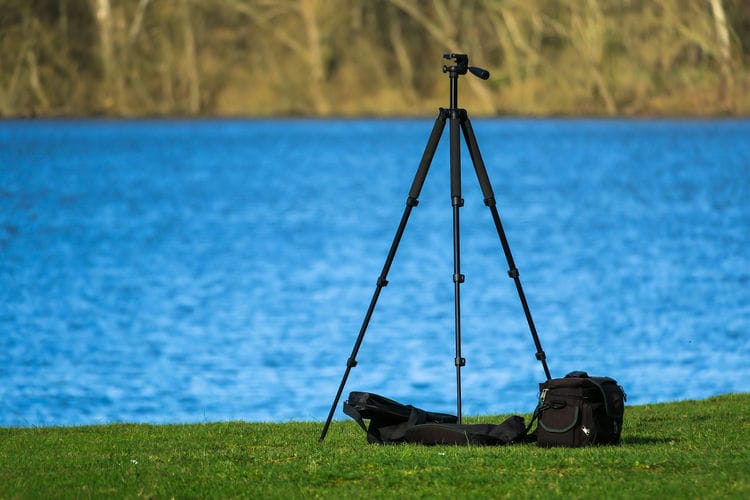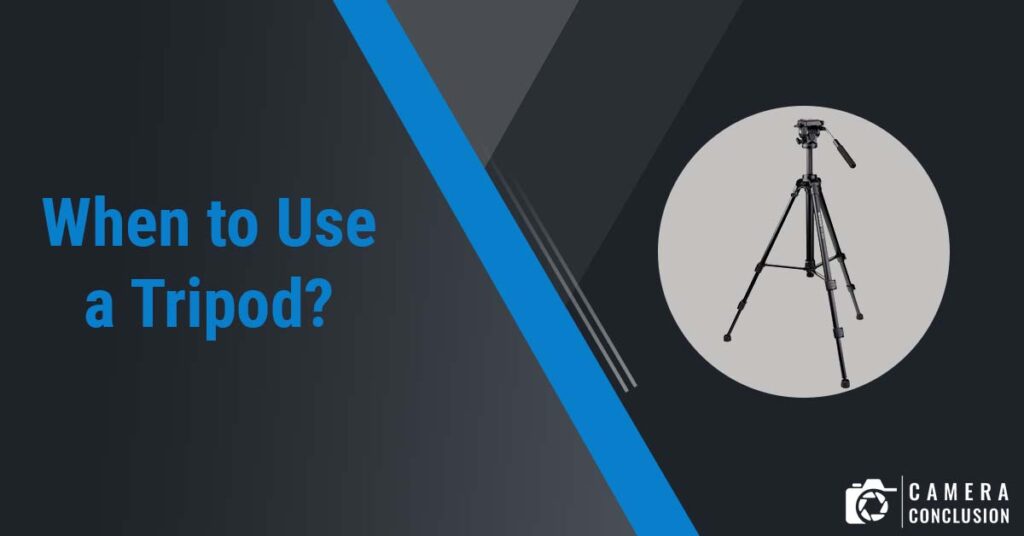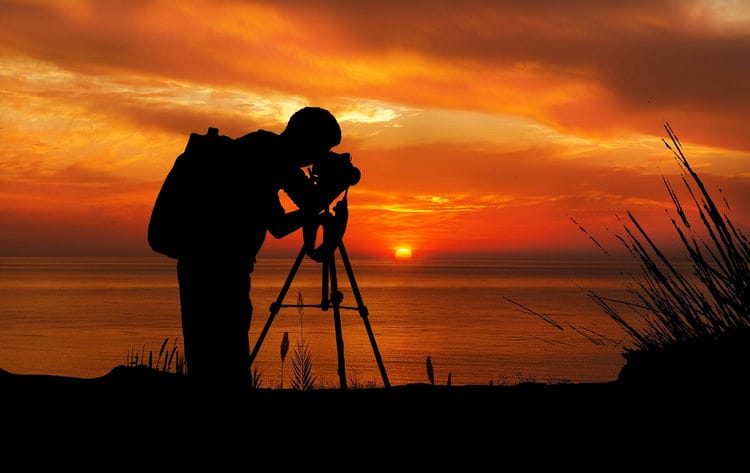Index
A tripod is a three-legged device used to hold a camera or other device steady while taking photos or videos. They are commonly used in photography and videography to prevent camera shake, which can cause blurry or unusable images and videos. Tripods come in a variety of sizes and designs, and can be made from materials such as aluminum, carbon fiber, and plastic.
They can also be used for other purposes such as telescopes, binoculars and microphones. Many tripods also feature adjustable legs, which can be extended or contracted to allow for shooting at different angles and heights. Some tripods also come with a pan and tilt head, which allows for precise movement and framing of the shot.

Types of Camera Tripods
- Tabletop Tripods: These are small, lightweight tripods that are designed for use on a tabletop or other flat surface. They are perfect for small point-and-shoot cameras and are easy to transport.
- Compact Tripods: These tripods are slightly larger than tabletop tripods and are designed for use with compact cameras and mirrorless cameras. They are lightweight and easy to carry, but can still provide a stable base for your camera.
- Professional Tripods: These tripods are designed for use with professional-level cameras and lenses. They are typically made from more durable materials such as aluminum or carbon fiber and can support much heavier equipment. They also have more advanced features such as removable heads and leg sections that can be adjusted independently.
- Travel Tripods: These tripods are designed specifically for photographers and videographers who are always on the go. They are lightweight and compact, but still provide a stable base for your camera. They are also easy to pack and transport.
- Monopod Tripod : A monopod is a type of tripod that has a single leg and is designed to be held in one hand. They are often used in situations where a traditional tripod would be too cumbersome, such as when shooting in crowded areas or when trying to capture action shots.
- Tripod with video head: Tripods with video head are designed for videography, allowing for smooth panning and tilting movements. They typically feature a fluid head that allows for precise adjustments and a smooth movement, which is essential for capturing stable video footage.
Importance of using a Tripod in Photography
- Stability: Tripod provides a stable base for your camera, which helps to prevent camera shake and blur in your photos. This is especially important when using slow shutter speeds or long telephoto lenses, as even the slightest movement can cause blurring in the final image.
- Sharpness: A tripod allows you to take sharp, in-focus shots, even in low-light situations. This is because the camera is held steady, which allows for more precise focusing and sharper images.
- Flexibility: A tripod allows you to take photos from a variety of angles and perspectives that would be difficult or impossible to capture without one. This includes low-angle shots, high-angle shots, and shots from unique perspectives.
- Long exposures: Tripod is essential for taking long exposure shots, such as night photography or shots with intentional motion blur. Without a tripod, it is difficult to hold the camera steady for extended periods of time, which results in blur.
- Time-lapse: Tripod is also useful for creating time-lapse videos, which require the camera to remain in the same position for a prolonged period of time.
Reasons to Use a Tripod
Low Light Photography
Low light situations refer to environments where there is limited available light, such as in dimly lit rooms or at night. These situations can present several challenges for photographers:
- Shutter speed: In low light, the camera’s shutter needs to be open for a longer period of time to allow enough light to reach the sensor. This can lead to camera shake and blur, especially if the camera is hand-held.
- Aperture: To let more light in, the aperture (the opening in the lens) needs to be opened wider. This can make it more difficult to achieve a sharp focus or a deep depth of field, as the aperture is wider.
- ISO: To compensate for the low light, the camera’s ISO (sensitivity to light) needs to be increased. However, increasing the ISO can lead to noise (graininess) in the final image.
- Autofocus: Low light can make it more difficult for the camera’s autofocus system to lock onto a subject, leading to blurry or misfocused images.
- Color Balance: Without enough light, colors can appear dull and washed out in photos.
- Noise: In low light, the camera’s sensor needs to work harder to gather light, which can lead to an increase in noise (graininess) in the final image.
Tripod can help to overcome some of these challenges by providing a stable base for the camera and allowing for longer exposures without camera shake. Additionally, using a fast lens (with a wide aperture) and increasing the ISO can help to gather more light. Using a flash or a continuous light source can also help to illuminate the scene, but it can also affect the natural ambiance and mood of the photo. Ultimately, low light photography requires a combination of technical skills and creativity to achieve the desired results.
Landscape Photography
Tripod is a crucial tool for capturing sharp and detailed landscape images because they provide a stable platform for the camera to rest on, preventing camera shake and movement.
This is particularly important for landscape photography because the scenes being captured are often relatively static, and thus require a long exposure time to capture the necessary amount of light. Long exposure times can cause blur in the final image if the camera is not held completely still.
Additionally, Tripod allow for precise adjustments to the camera’s position and angle, which can be crucial in composing a landscape image. it easy to adjust the camera’s tilt and pan to align the horizon, and to frame the image in the way you want. Tripod also allows you to use the camera’s live view feature to compose shots with greater precision, which is especially helpful when shooting with wide-angle lenses.
Moreover, Tripod also help in creating panoramic images. It allows you to take multiple images with different angles, and then you can stitch them together to create a panoramic image with a wide field of view.
HDR Photography
Tripod is an essential piece of equipment for HDR photography because they allow the camera to remain stable and in the same position while multiple images are taken at different exposures. This is necessary because HDR photography involves combining multiple images with different exposures to create a final image with a greater dynamic range of brightness and color.
Without a tripod, the camera would move slightly between shots, resulting in misaligned images that cannot be accurately merged into a final HDR image. It also allows to take long exposures without worrying about camera shake which can result in blur in the final image.
Macro Photography
Tripod is an essential tool in macro photography because they provide a stable platform for the camera to rest on, preventing camera shake and movement. This is particularly important in macro photography because the depth of field is often very shallow and even the slightest movement of the camera can cause the image to be out of focus.
When using a tripod, the camera can be precisely positioned and focused on the subject, allowing the photographer to take advantage of the shallow depth of field to achieve a sharp and precise focus on the subject, while the background is blur.
Tripod also allows for precise adjustments to the camera’s position and angle, which is essential for composing shots and capturing the desired perspective in macro photography. This can be particularly useful in capturing small subjects or details, where a precise composition is essential.
Additionally, Tripod allows you to use the camera’s live view feature to compose shots with greater precision, which is especially helpful when shooting with macro lenses. This feature allows you to magnify the live preview of the scene in the camera’s LCD screen, which can help with focusing on small and hard to see subjects.
Another advantage of using a tripod is that it allows you to use a cable release or a self-timer to trigger the camera, which can further reduce camera shake and blur in the final image.
Night Photography
Tripod can be used to capture sharp and detailed images in low light situations by providing a stable platform for the camera. In low light conditions, the camera’s shutter speed must be slower to allow more light to reach the sensor, which can cause blur if the camera is not held steady. A tripod allows the camera to be securely mounted, reducing the risk of camera shake and resulting in sharper images. Additionally, tripods also often include a mechanism for adjusting the angle of the camera, which can be useful for composing shots in low light.
Time-lapse Photography
Tripod can be used to achieve smooth and stable time-lapse footage by providing a stable platform for the camera to be mounted on. Time-lapse photography involves capturing a series of images over a period of time, which are then played back at a higher frame rate to create the illusion of fast motion.
If the camera is not held steady during the capture of these images, the resulting footage can appear jumpy or shaky. A tripod allows the camera to be securely mounted, reducing the risk of camera shake and resulting in smooth and stable time-lapse footage. Additionally, some It also have built-in intervalometers or can be used with external intervalometers which allow the camera to be programmed to take a series of photos at set intervals, which is essential to create time-lapse footage.
Night Photography
Tripod can be used to capture sharp and detailed images in low light situations by providing a stable platform for the camera, allowing longer exposure times and providing more control over the composition of the image. In low light conditions, the camera’s shutter speed must be slower to allow more light to reach the sensor, which can cause blur if the camera is not held steady. A tripod allows the camera to be securely mounted, reducing the risk of camera shake and resulting in sharper images.
Additionally, Tripod also often include a mechanism for adjusting the angle of the camera, which can be useful for composing shots in low light. It also allow for the use of smaller apertures, leading to a greater depth of field and sharper images. Additionally, tripods enable you to use longer shutter speeds without camera shake, which is especially helpful for capturing low light landscapes or night-time cityscapes, or for capturing fine details in low light situations such as in a museum or dimly lit interior.
Time-lapse Photography
Tripod can be used to achieve smooth and stable time-lapse footage by providing a stable platform for the camera to be mounted on, allowing fine adjustments to the camera’s position and providing a remote control option. Time-lapse photography involves capturing a series of images over a period of time, which are then played back at a higher frame rate to create the illusion of fast motion. If the camera is not held steady during the capture of these images, the resulting footage can appear jumpy or shaky.
A tripod allows the camera to be securely mounted, reducing the risk of camera shake and resulting in smooth and stable time-lapse footage. Additionally, some tripods also have built-in intervalometers or can be used with external intervalometers which allow the camera to be programmed to take a series of photos at set intervals, which is essential to create time-lapse footage.
Tripod also allow for fine adjustments to the camera’s position, such as panning or tilting, which can add dynamic elements to your time-lapse footage. Lastly, someTripod also include a remote control option that can be used to trigger the camera, this is extremely helpful when doing long time-lapses, avoiding any movement caused by the photographer pressing the camera’s button.
Group Shots and Self-Portraits
Tripod can be used to capture group shots and self-portraits by providing a stable platform for the camera, allowing the photographer to be included in the shot, and providing a remote control option. A tripod allows the camera to be securely mounted in a specific position, which can be useful for capturing group shots or self-portraits.
This is especially useful when you want to get everyone in the shot and don’t have someone to take the photo for you. Additionally, tripods often include a mechanism for adjusting the angle of the camera, which can be useful for composing shots and framing the group or self-portrait.
Some tripods also include a remote control option, which can be used to trigger the camera, allowing the photographer to be included in the shot without having to press the camera’s button, which can cause camera shake. This is especially useful when taking self-portraits or group shots where the photographer wants to be included in the shot.
Long-exposure shots
Tripod can be used to capture long-exposure shots by providing a stable platform for the camera, allowing for longer exposure times, and providing a way to control the camera. Long-exposure photography is a technique where the camera’s shutter is open for a prolonged period of time, typically several seconds or minutes, to capture a scene with a lot of movement such as flowing water, moving clouds, or passing cars. When using a long exposure, the camera must be held steady to avoid blur. A tripod allows the camera to be securely mounted, reducing the risk of camera shake and resulting in sharp images. Additionally, tripods often include a mechanism for
Video Shooting
adjusting the angle of the camera, which can be useful for composing shots. Some tripods also include a remote control option, which can be used to trigger the camera, allowing the photographer to start and stop the exposure without having to press the camera’s button, which can cause camera shake. This is especially useful when doing long-exposure shots, as even the slightest movement can cause blur.
Tripod can be used to achieve smooth and stable video footage by providing a stable platform for the camera, allowing for precise adjustments to the camera’s position and providing a way to control the camera’s movement. A tripod allows the camera to be securely mounted, reducing the risk of camera shake and resulting in smooth and stable video footage.
Additionally, most tripods have a mechanism for adjusting the angle of the camera, which can be useful for composing shots and controlling the movement of the camera. Some tripods also include a fluid head, which allows for smooth panning and tilting movements and provides more precise control over the camera’s movement.
It also provide a way for the camera operator to control the movement of the camera, which is essential for producing smooth and stable footage. The use of a tripod can make all the difference when it comes to video footage, as a shaky video can be very distracting and hard to watch.
FAQs
Conclusion
In conclusion, tripods are an essential tool for photographers and videographers. They provide a stable platform for the camera, allowing for sharper images, smoother and stable video footage, and more precise control over the composition and movement of the camera.
Tripods are particularly useful in situations where a steady camera is required, such as low light, macro, long-exposure, time-lapse, group shots, self-portraits and video shooting. They can also be used for other photography styles such as landscapes, portraits, and product photography. Whether you’re a professional photographer or an amateur, a tripod is an investment worth making, as it will help you to achieve better results and give you more flexibility and control over your photography and videography.

